The hinterland is dotted with beautiful medieval villages like Calci with its Certosa, Vicopisano with the fortress designed by Brunelleschi and the Etruscan Coast with the village of Bolgheri in the heart of the wine district where the famous Sassicaia wine.
The Etruscan coast
Rosignano Marittimo has a pleasant marina with shops and restaurants with a beach aside. Rosignano has also an interesting archeological museum (Palazzo Bombardieri) with etruscan materials coming from 300 tombs of the necropolis and from the ancient harbour of Vada. Vada (40 minutes by car from Vallelunga) has a 5 km long free beach. Further South you will find the interesting ancient Mining Park of San Silvestro (400 Ha) and not too far from it the magnificent Baratti Gulf and the ancient etruscan and medieval town of Populonia (very important in ancient times for the processing of iron minerals coming from Elba island) with its Acropolis and archeological park.
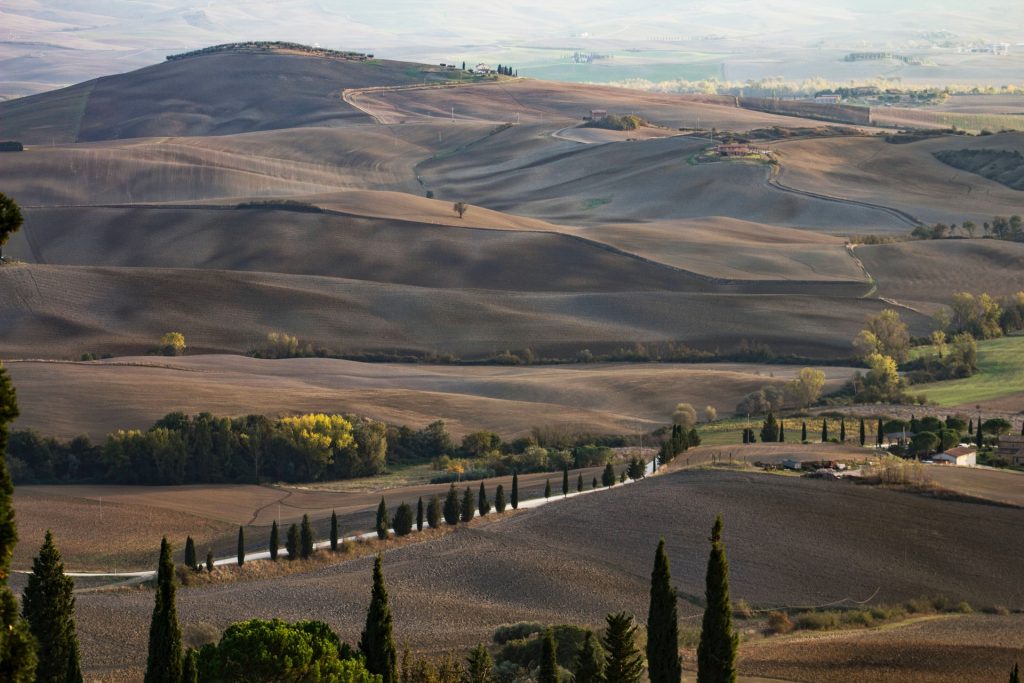
Photo by Marco Timelli
The coast north of Livorno
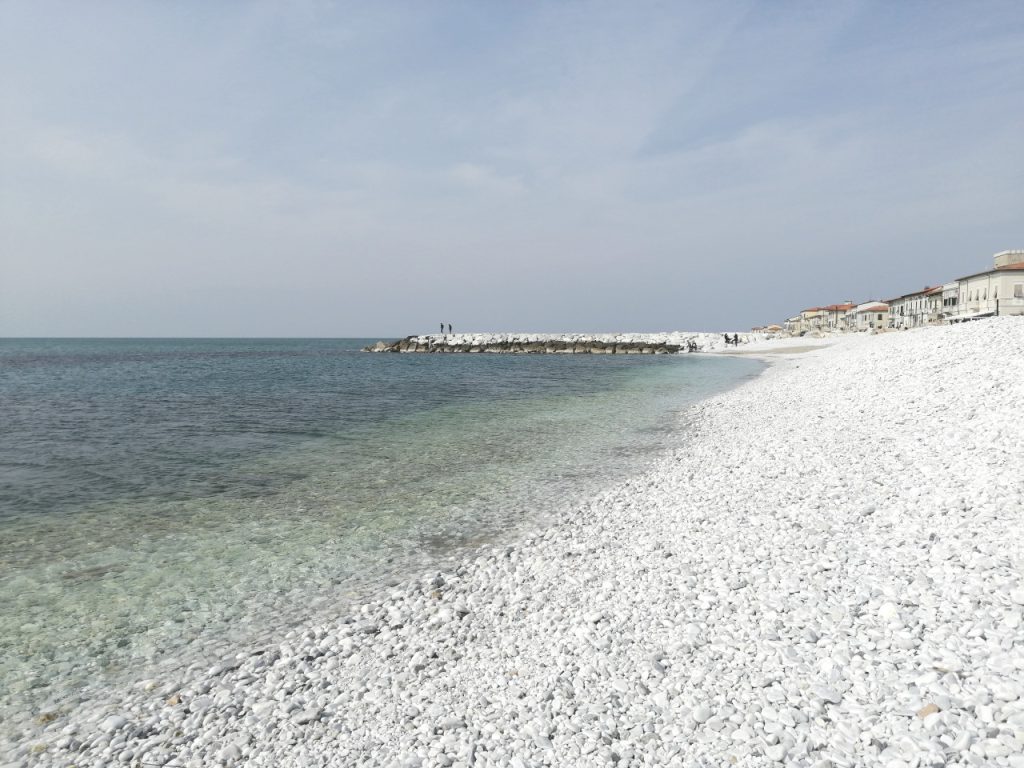
Tirrenia (only 12 Km from Vallelunga) has a wide avenue parallel to the sea with hotels, bars restaurants and villas in the pine-woods. The large beach is almost completely occupied by baths with admission fee with beach chairs and beach umbrellas, often with bar and restaurant. Tirrenia has two golf courses Metropolitan (18 holes) and Golf Pisorno (9 holes)We suggest Bagno Lido for good service, good and relatively cheap food.
.
Marina di Pisa (next to Tirrenia) has a narrow beach with small artificial sea pools, many good fish restaurants and next to the Arno River mouth a new and nice Marina.
San Rossore-Migliarino-Massaciuccoli Regional Park (next to Arno River on the northern side of it) about 5000 hectars of pinewood, beach, swamps, open to public on Mondays or with guides. See web site and 4 different visitor centers: https://www.parcosanrossore.org/ .
Torre del lago (Massacciuccoli lake): Massaciuccoli lake has a surface of 7 square Km and a perimeter of 11 Km. Boats, touring the lake to observe many wild birds’ species who live here, leave from Torre del Lago. Along the lake, you can visit the villa-museum of the famous Italian opera composer Giacomo Puccini, “GENIUS LOCI” of the village, where he lived from 1891 to 1921, and composed many of his most famous works. Every year in july and august the open air theatre near the lake, hosts a festival of Puccini’s operas.
Marina di Vecchiano. Beach with baths with admission fee with beach chairs and beach umbrellas and free beach. Bagno Duna Onda, via del Balipedio, 56091, Marina di Vecchiano Tel. +39 (0)50 803390 Restaurant and parking.
Versilia Coast
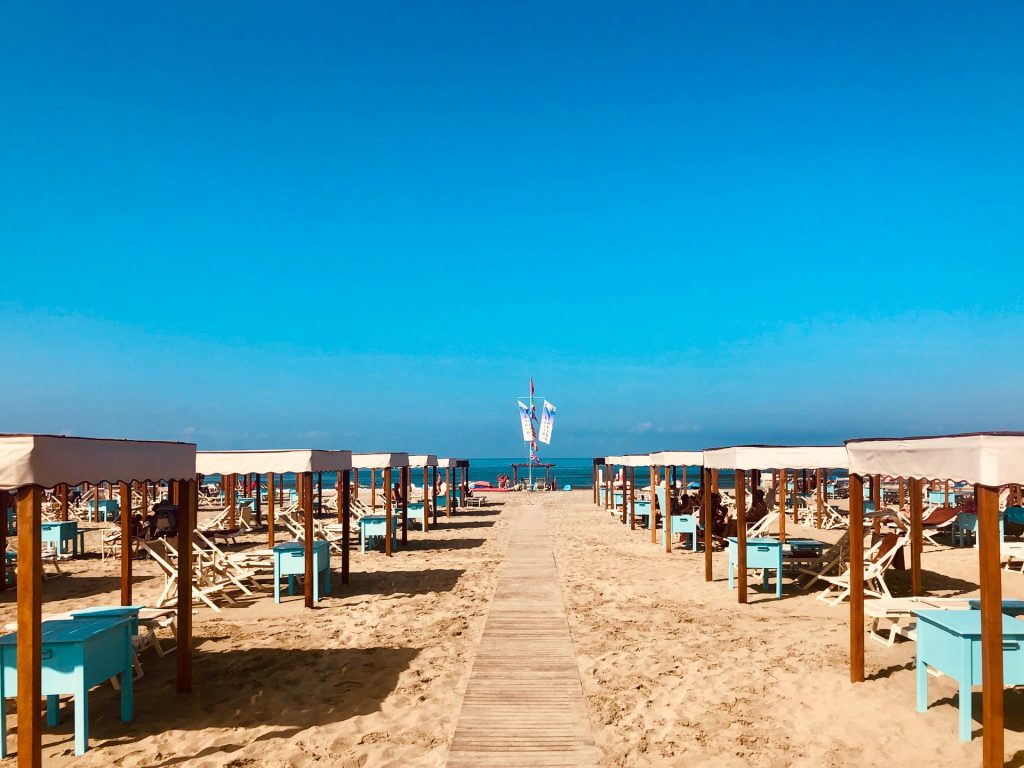
Photo by Luca Florio
Viareggio: ancient harbour of the republic of Lucca, from the end of the XIX century it became an important and fashionable sea resort. During the ‘20s and ‘30s, in the town, sited between the sea and the pinewoods, many nice Liberty style villas were built. The long beach north of the harbour reaches Lido di Camaiore and goes on northwards withthe many sea side resorts of Versilia coast (Le Focette, Marina di Pietrasanta) On it you will find a continous chain of baths with admission fee. On the parallel avenue are many good shops, bars and restaurants.
Forte dei Marmi: it is now one of the most fashionable, exclusive and expensive sea resorts of Italy. It has an old hamlet center with shops of many important fashion brands (Gucci, Versace, etc.) and restaurants, a seaside avenue with baths with admission fee and restaurants and an interior of pinewoods interspersed by gorgeous villas. A nice market every day in the center of Forte.
Pisa
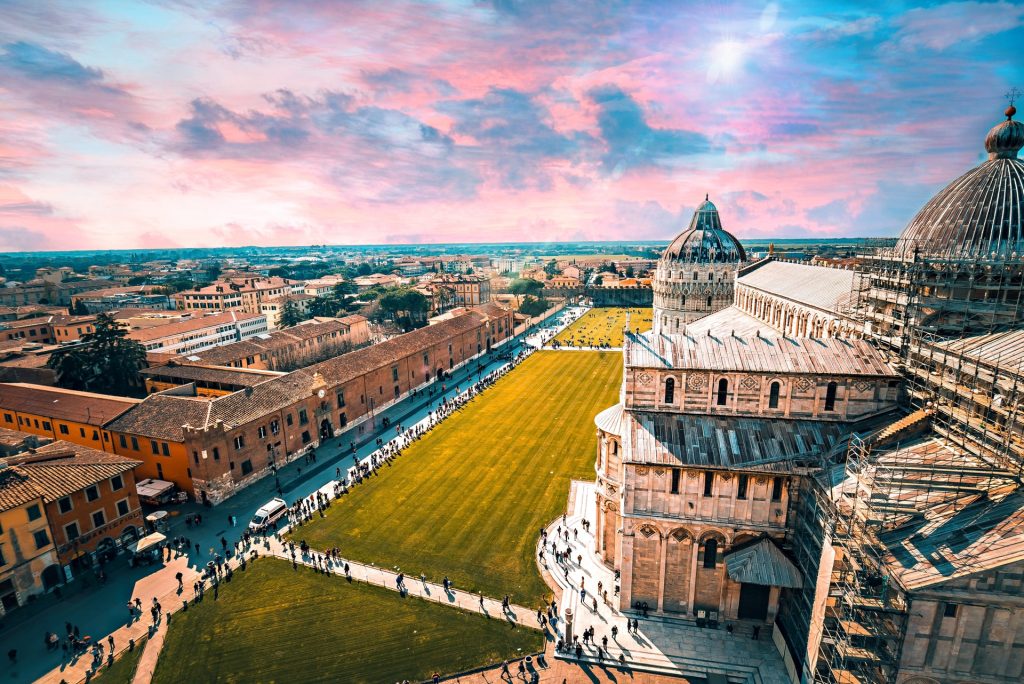
Photo by Andrae Ricketts
Pisa, located at the mouth of the Arno river and near the sea, was in the 13th century one of the most important sea ports in Italy.
The Porto Pisano, was the main seaport of the Republic of Pisa, one of the main historical Maritime Republics of Italy controlling a significant Mediterranean merchant fleet and navy. Today the city, known for its icon: the Leaning Tower and its square with the Baptistery, the Cathedral and the Camposanto Cemetery deserves much more than a fleeting visit. The world-famous Leaning Tower is just one of many noteworthy sights in this surprising city. Education has fuelled the local economy since the 1400s, and students from across Italy compete for places in the Scuola Normale Superiore, an elite university located in the gorgeous Piazza dei Cavalieri, designed and decorated by the famous painter-architect Giorgio Vasari in the XVI century who also designed the magnificent church Dei Cavalieri in the piazza. Pisa also maintains a number of historical well-maintained buildings, many of them on the two river banks: Palazzo alla Giornata, Palazzo Agostini, the magnificent Palazzo Blu hosting a collection of paintings and temporary expositions, the museum of Saint Matthew (San Matteo) with a collection of gold plated paintings and museum of “Le Navi Antiche di Pisa” located in the majestic rooms and aisles of the “Arsenali Medicei” (the Medicean Arsenals), along the Arno river.
Siena
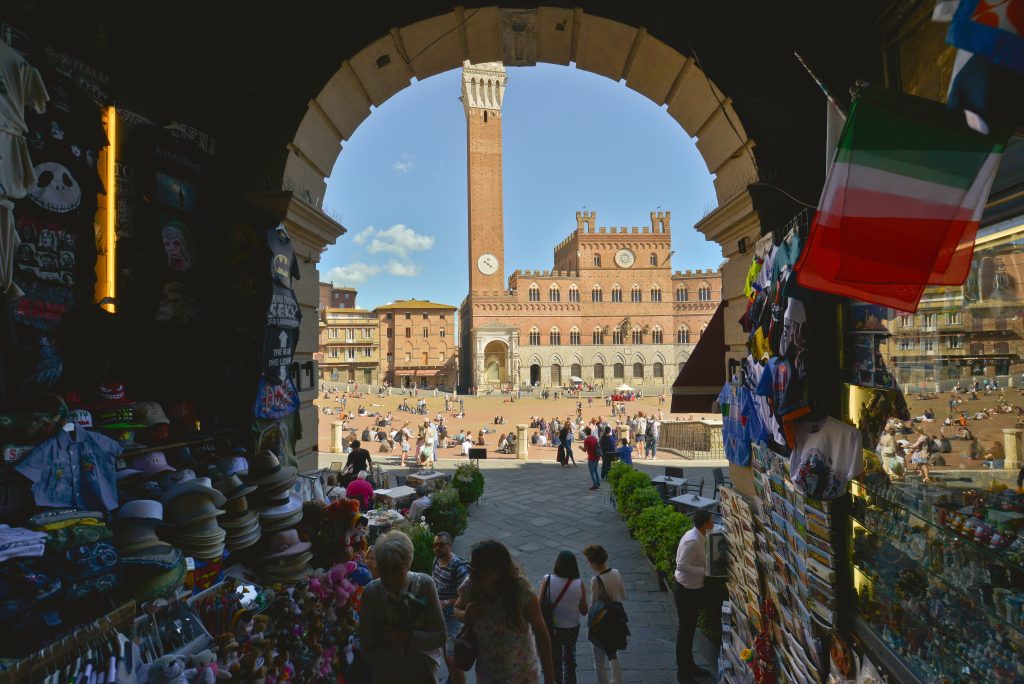
Siena, an UNESCO world heritage site, reaching the height of its power in the 13th and 14 th Century, is one the best preserved Medieval towns in the whole of Italy.
The city is designed all around the main square, Piazza del Campo, known simply as Il Campo, a huge shell-shaped ‘basin’ once the social and economic city centre with elegant buildings such as the Palazzo Pubblico with its Museo Civico with splendid Medieval frescoes, including the famous cycle “Good and Bad Government” by Ambrogio Lorenzetti and the bell tower, Torre del Mangia. If you happen to be here in summer don’t miss The Palio dell’Assunta, a horse race held twice a year (2nd July and 16th August) in Piazza del Campo. On this occasion the square is transformed into a race track where ten horses and riders, bareback, run for the seventeen contrade (city wards) each year. The Corteo Storico, a pageant to the sound of the March of the Palio, that precedes the race, attracts visitors and spectators from around the world. Another magic site is the Gothic Duomo with its cathedral full of works of art, the Battistero and the interesting museum-hospital Santa Maria della Scala, Other interesting sites are la Pinacoteca Nazionale, the churches of San Domenico, Santa Maria dei Servi, San Francesco, l’Oratorio di San Bernardino, the home of Santa Caterina (the patron saint) and the Medici Fortress.
Once you’ve visited the top sights, one of the best things to do in Siena is getting lost in the side streets.
Lucca

Photo by Patrick Schneider
Lucca a very charming city was an important Roman town. The amphitheater in the square by the same name, was built in roman times.
In late Middle Age and Renaissance Lucca became an important town of trade and banking activities. Lucca still manitains its intact walls of 16.th century, accessible on foot or by bike. Its center is rich of fine and interesting churches and palaces, such as Church of S. Martino (Cathedral of 11.14.century, pisan romanesque style, Ilaria del Carretto-tomb l5.century) –Church of S. Giovanni and Baptistery (9.-14.century) – Church of San Michele (12.-13.century) – Church of San Frediano (12.-13.century –Torre (Tower) Guinigi and its narrow and charatteristic streets offer an opportunity for pleasant tours and good shopping. Do not miss the antiquities market, the third weekend of every month, in the center of the town. To try the typical cake of Lucca, « il buccellato » go to Taddeucci, Cathedral Square (S. Michele) ; in Via Fillungo, you can find bijoux and antiques (Carli), and for a good aperitif go to Simi, the café where the famous composer Giacomo Puccini, used to go. In the outings visit the magnificent Villa Reale at Marlia, home of Elisa Baciocchi, sister of Napoleone Bonaparte and Villa Mansi.
Livorno
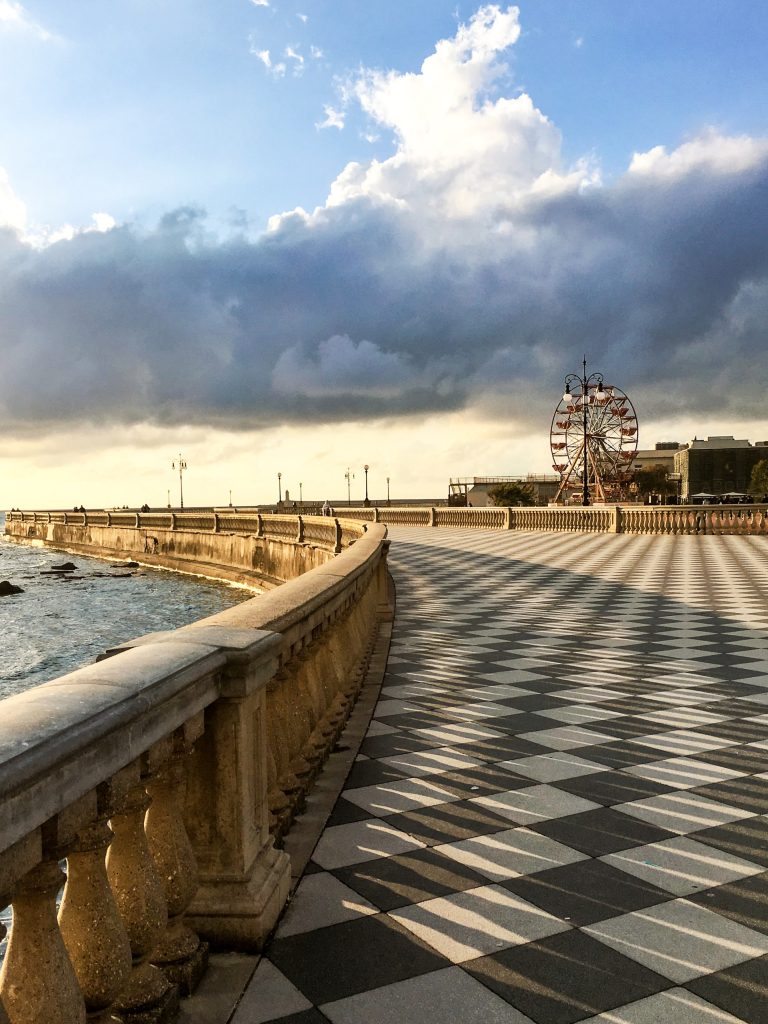
Photo by Maria Bobrova
LIVORNO In the X century Livorno was a small village on the southern shore of Portus Pisanus (a lagoon located in the plain between Pisa and Livorno), the harbour of Pisa, the powerfull «Repubblica Marinara» during the Middle Age.
At the end of 16 th Century, the lagoon no more existed ; after the architect Buontalenti’s plan, a new and larger town and harbour were built from the Medici family, Grand Dukes of Tuscany on the waterfront. The town was established in front of the harbour and it partially looked as it was still today. – from Fosso Reale (a channel forming an island) to Fortezza Nuova (1590), with Via Grande crossing the centre , the cathedral (built 1594-1606) and close to it Piazza del Municipio.. To develop the town the Medicis made it a « duty free harbour » something that attracted merchats from England and Holland and jews, armenians and other people from over all Mediterranean See. Tips for a visit: Fortezza Vecchia; the ancient fortress and i Bottini dell’Olio (old oil warehouses ); i Fossi (ancient channels, the old harbour; the Cathedral of Santa Giulia, the Quartiere Venezia a network of channels to discover by boat (https://www.livornosailing.it/en/) and to enjoy a good dinner at the various restaurants.

